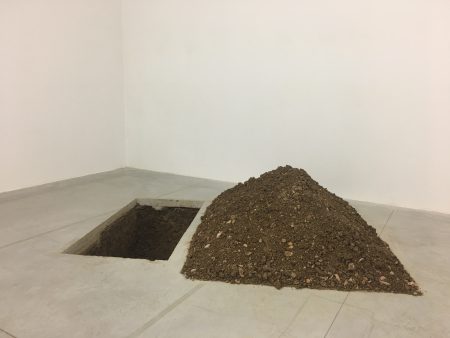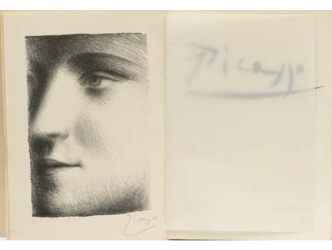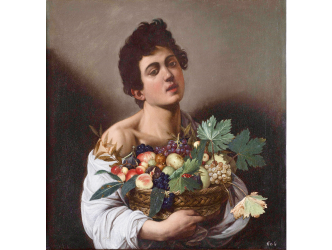No great women artists
“Why have there been no great women artists?” In 1971, American art historian Linda Nochlin published a groundbreaking article in ARTnews that challenged conventional thinking and resurrected from oblivion several female artists—among them, the Italian painter Artemisia Gentileschi (1593-1653).
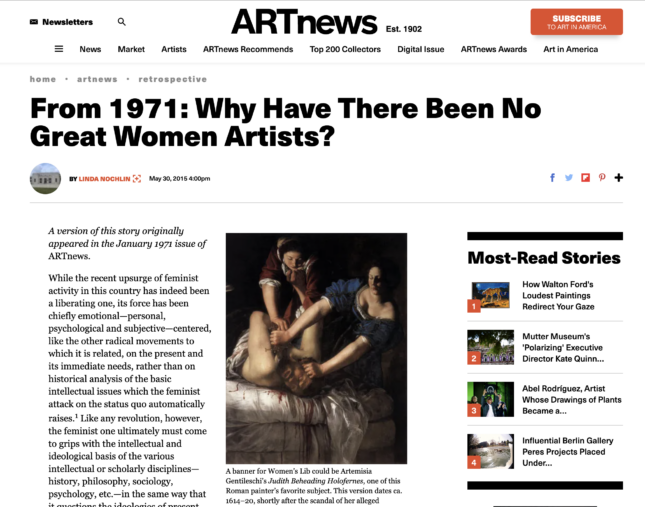
Nochlin laid the foundation for a new logic that aimed to demonstrate that, even when women’s talent flourished in a hostile world, it was often later forgotten to history.
Cultural phenomenon

Artemisia
Since that bold statement, Artemisia has moved far beyond the niche of Old Master painting to become a full-fledged cultural phenomenon. This woman, model of independence and resilience fused with a powerful artistic conviction, was raped at the age of 18 by painter Agostino Tassi, while he was working under her father, Orazio Gentileschi. As was customary at the time, her father asked the attacker—unsuccessfully—to marry her. What followed was a well-documented trial, preserved in the Roman state archives, during which Artemisia was, unsurprisingly, subjected to public humiliation.
#MeToo
In the era of the #MeToo movement and, in France, the Mazan trial that delivered justice to Gisèle Pelicot, Artemisia has emerged as a powerful figure of contemporary identification. Yet Patrizia Cavazzini, member of the scientific committee at Rome’s Galleria Borghese, and Maria Cristina Terzaghi, of the scientific committee at the Capodimonte Museum in Naples—co-curators of the exhibition “Artemisia, Art Heroine,” on view at the Musée Jacquemart-André in Paris through August 3—would prefer that we step away from her biography to instead focus on the strength of her artistic creations. (see here the previous show at the Jacquemart-André)
Beauty and violence
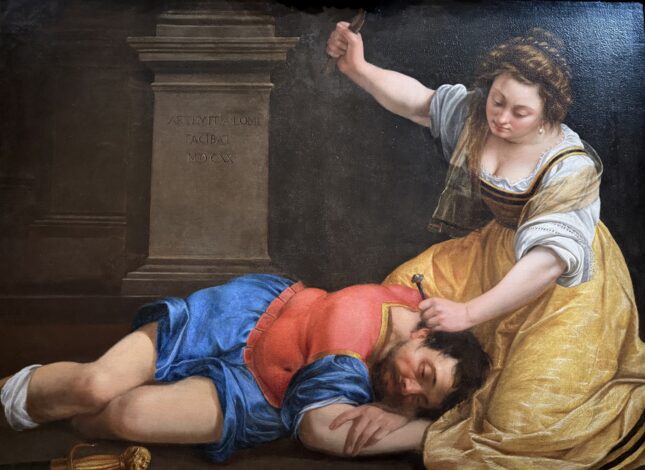
Artemisia
The curators have gathered 40 paintings by Artemisia as well as her contemporaries. What’s immediately striking, aside from the luminous beauty and visceral violence in certain paintings, is how many works were only rediscovered in the past five years.
To appreciate is to support.
To support is to donate.
Support JB Reports by becoming a sustaining Patron with a recurring or a spontaneous donation.
Uncertainties and controversies

Artemisia, Art Heroine
In the realm of Old Master paintings, uncertainties and controversies abound. For instance, we still don’t know exactly when or under what circumstances Artemisia died. It’s thought she may have been the victim of a plague epidemic in Naples in 1656. As to whether a given work was painted by her alone or by one of her contemporaries, whether it was a collaboration with her father or the collective efforts of her studio…Doubts of authorship often persist, and go unacknowledged in the exhibition labels.
Kind of self portrait

Artemisia
Among the recent discoveries, the curators are particularly proud to present a large composition, “Ulysses Recognizing Achilles Among the Daughters of Lycomedes,” which depicts five figures frozen in a tableau within a domestic interior. On the far left, a seated young woman is thought to be Artemisia herself, which suggests this could be a kind of self-portrait.
Caravaggio
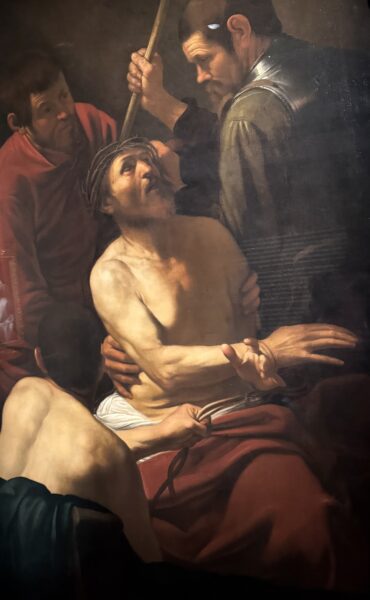
Caravaggio
More than by her father, Artemisia was deeply inspired by Caravaggio—his chiaroscuro and the illusion of movement in his figures. She almost certainly knew his “Magdalene in Ecstasy,” which in turn inspired her own small but exquisite oil on copper, “Danaë,” in which a nude figure with milky skin swoons beneath a cascade of golden coins.
Sleeping Venus
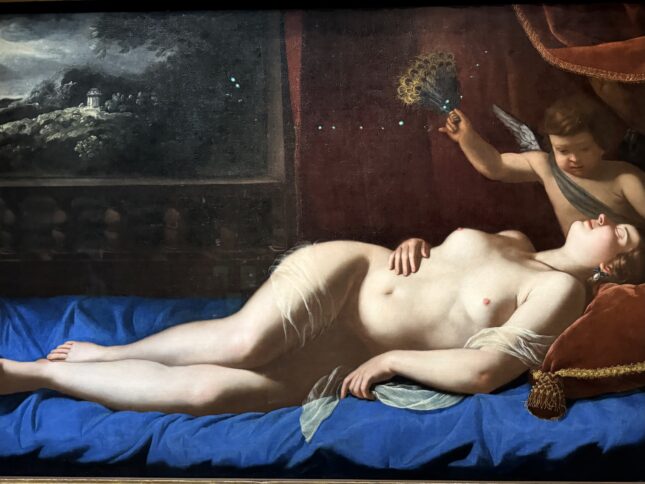
Artemisia
Nearby hangs her even more sensual “Sleeping Venus,” echoing the beauties of Titian. The goddess lies on a sheet—more a jewelry case than a bed—the color of lapis, a pigment that was extremely costly at the time, a testament to the wealth of the patron.
Ambiguous sinner
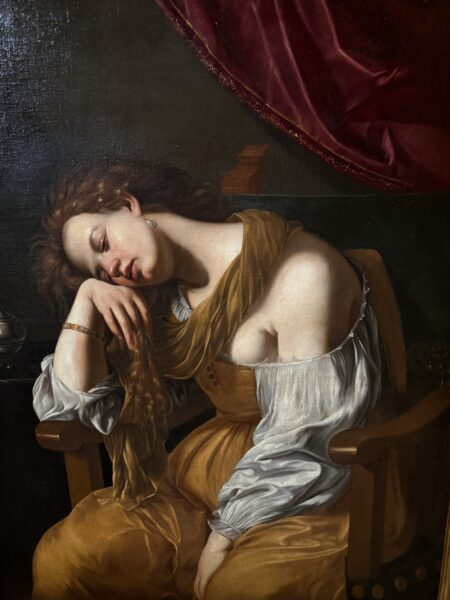
Artemisia
One of the most psychologically complex works in the show is a “Penitent Magdalene” from the cathedral of Seville. The highly composed posture of this repentant sinner is rather ambiguous. Her red nose hints at deep sorrow following tears, and her head rests in her hand in a gesture of weariness. Yet her shoulder is bare and her breast is subtly unveiled. A seductive Magdalene. A brazen Artemisia.
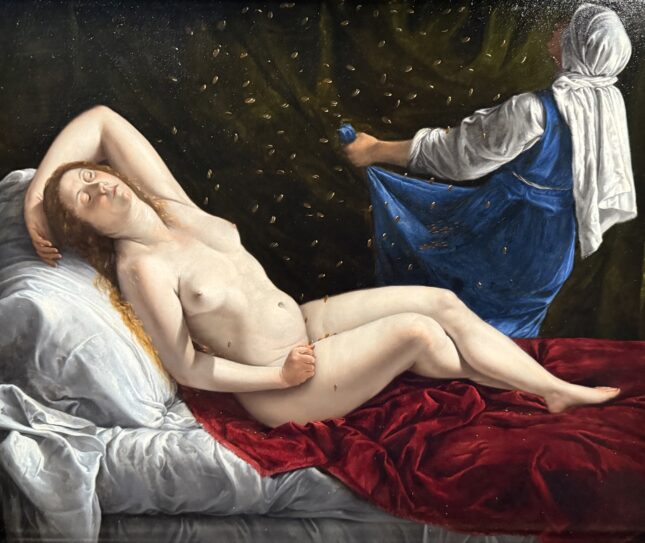
Artemisia
Through August 3. www.musee-jacquemart-andre.com/en/artemisia
Support independent news on art.
Your contribution : Make a monthly commitment to support JB Reports or a one off contribution as and when you feel like it. Choose the option that suits you best.
Need to cancel a recurring donation? Please go here.
The donation is considered to be a subscription for a fee set by the donor and for a duration also set by the donor.



